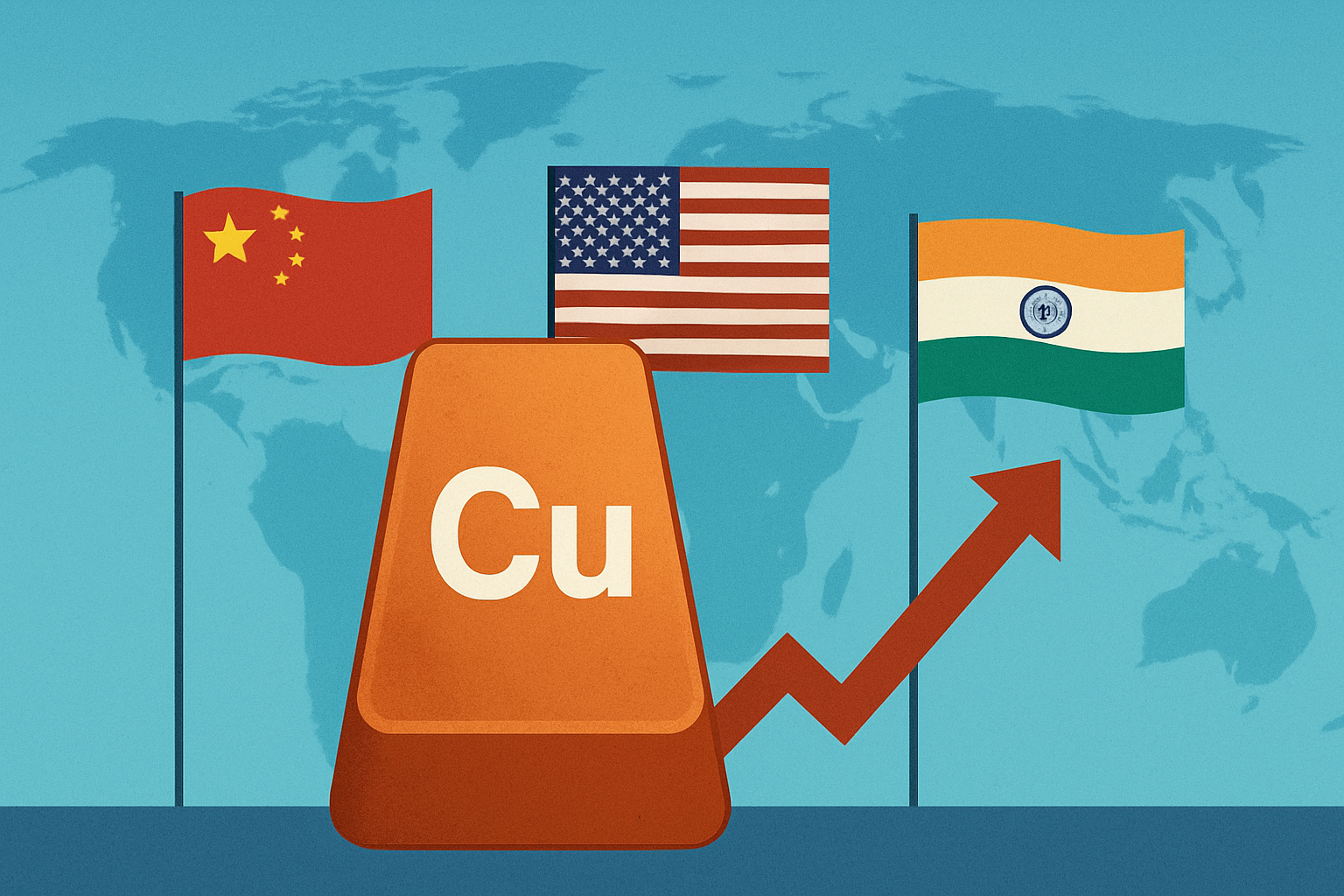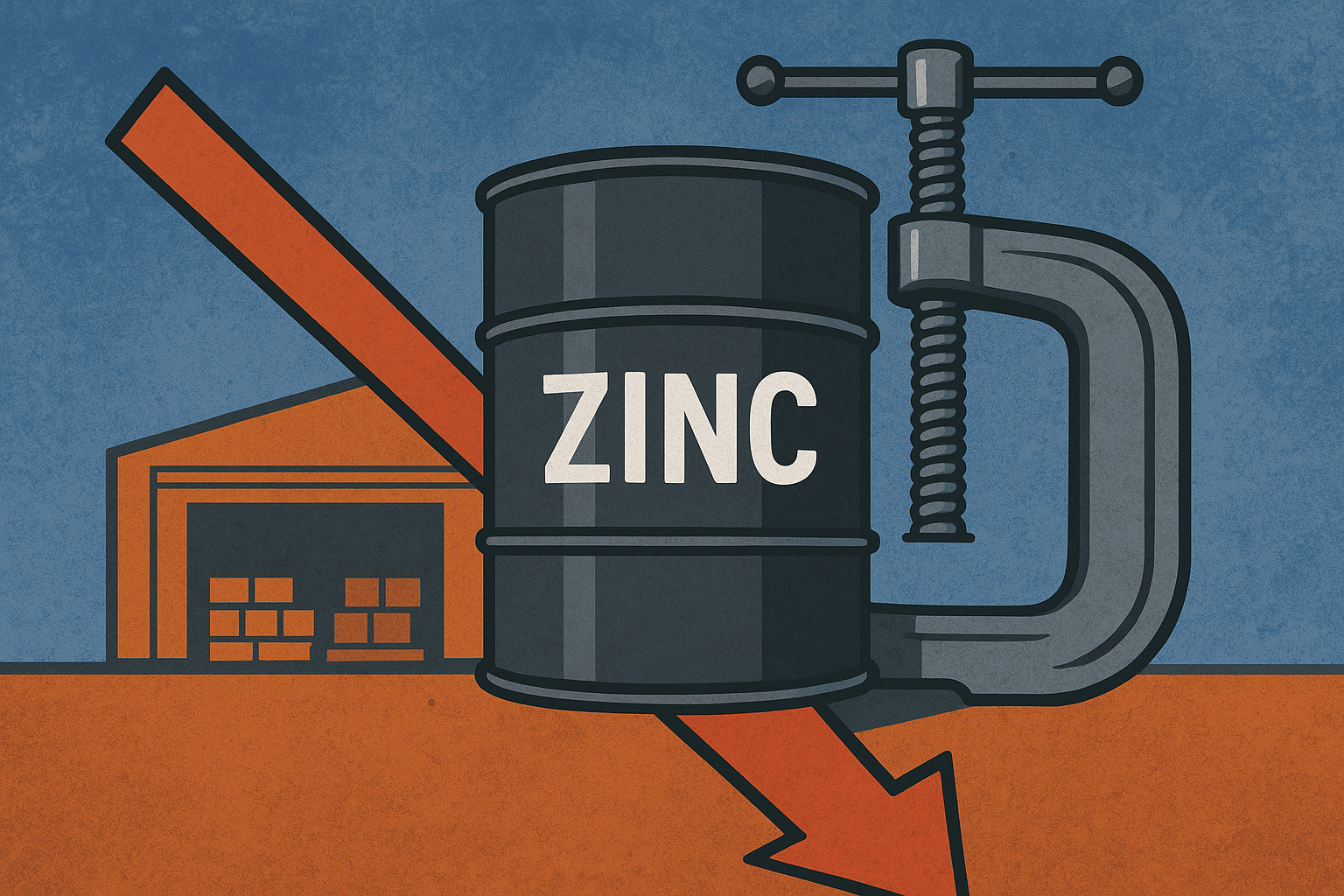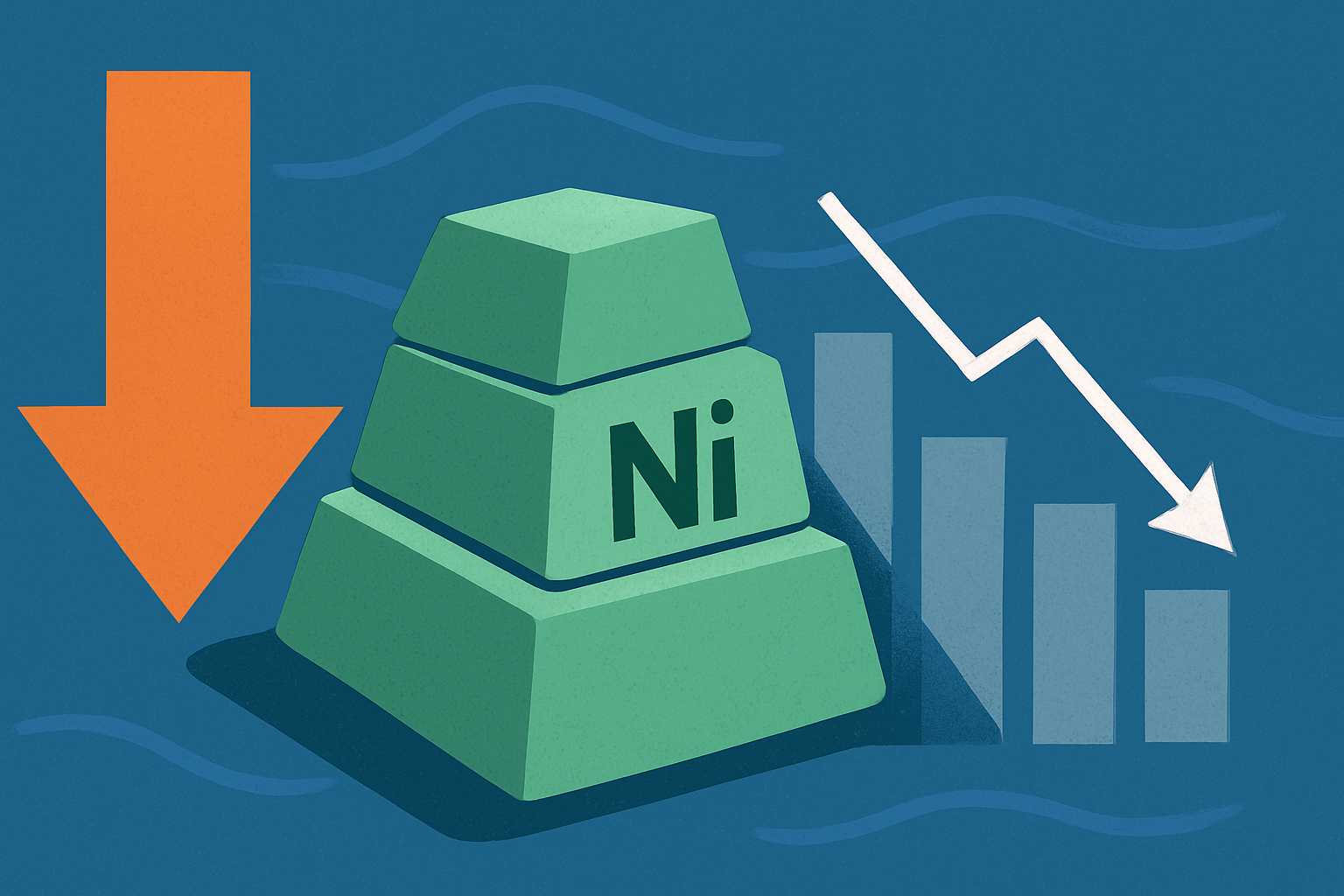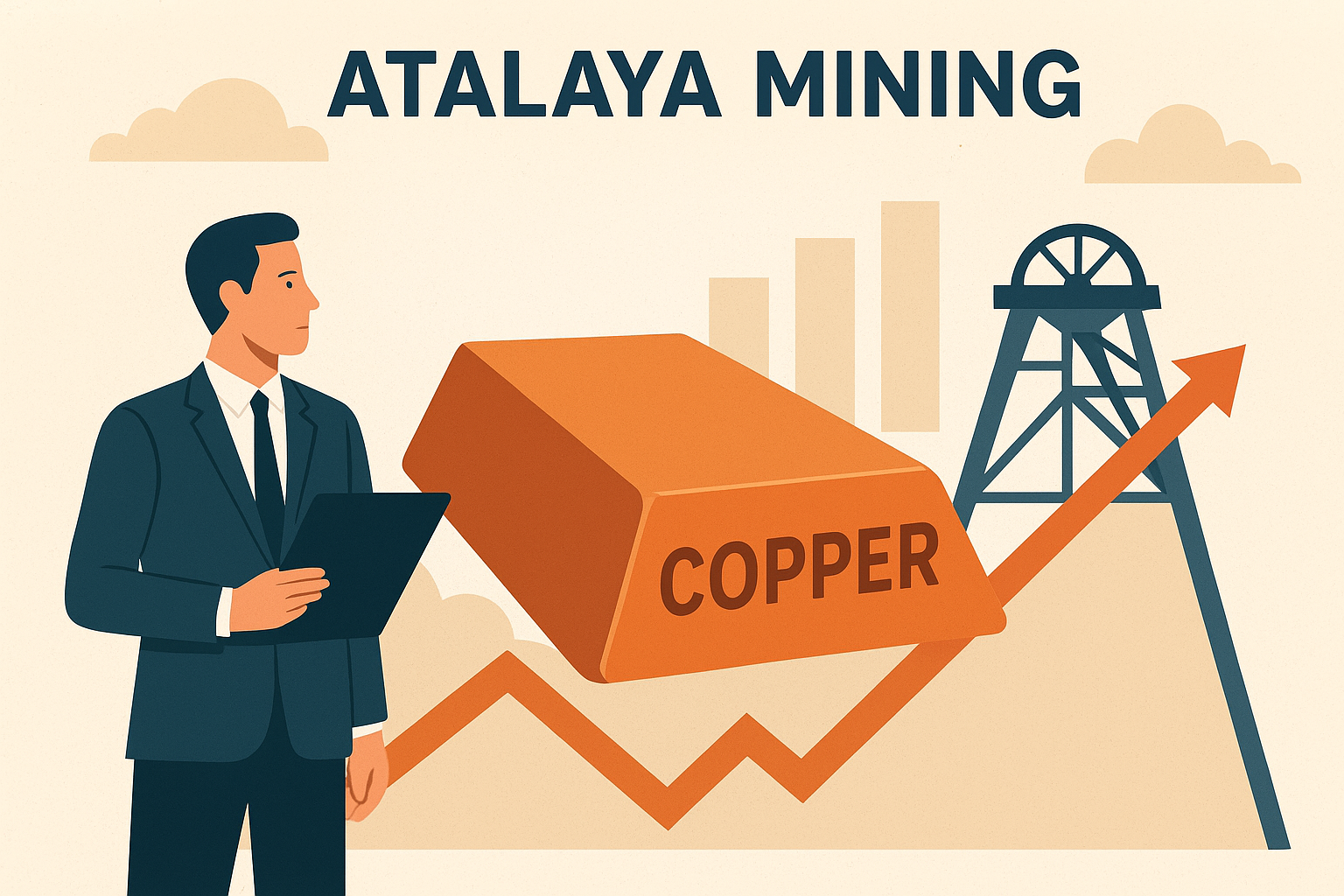The world’s copper market—long dominated by China’s industrial and construction juggernaut—is undergoing a quiet but profound shift. As Beijing’s growth engine shows signs of cooling, new demand centers are emerging from the West and South. The United States and India, driven by infrastructure modernization, energy transition policies, and the surging power needs of AI data centers, are positioning themselves as the next major anchors of global copper demand. For investors, this marks a structural turning point in one of the most critical commodities underpinning the global economy.
The End of China’s Copper Monopoly?
For nearly two decades, China has been the heartbeat of copper consumption, accounting for more than half of global demand. But as Reuters reported on October 20, 2025, that dominance is expected to ease over the next five years. China’s share of global refined copper demand is projected to decline from 57% in 2026 to roughly 52% by 2031, reflecting a slowdown in construction, real estate, and manufacturing activity.
While the figure may seem incremental, a 5% demand-share shift in a market exceeding 25 million tonnes is significant. Analysts from Wood Mackenzie note that China’s “old economy” sectors—property development and traditional heavy industry—are in structural retreat, while the country’s green energy buildout alone cannot fully offset the gap. The resulting moderation in Chinese demand growth is setting the stage for new global consumption leaders.
The Rise of the U.S. and India: Copper’s New Powerhouses
The United States is expected to increase its copper consumption by nearly 50% by 2031, reaching approximately 2.2 million tonnes. This surge is being driven by three converging forces:
- Grid Modernization: The Biden and Trump administrations—despite political divergence—share a policy focus on upgrading America’s outdated electrical grid. Expanding transmission lines, reinforcing power infrastructure, and integrating renewable sources are all copper-intensive efforts.
- AI & Data Center Expansion: Copper’s superior conductivity makes it indispensable in the sprawling energy-hungry data centers powering artificial intelligence. As Goldman Sachs recently estimated, each hyperscale AI facility can require up to 40 kilometres of copper cabling.
- Electric Vehicle (EV) Adoption: The U.S. EV sector, led by companies like Tesla ($TSLA) and General Motors ($GM), continues to grow, with copper being a critical input in motors, batteries, and charging networks.
Meanwhile, India is undergoing its own copper renaissance. As part of its target to reach 500 GW of non-fossil fuel capacity by 2030, New Delhi is investing heavily in renewable energy infrastructure and nationwide grid expansion. According to the International Energy Agency (IEA), India’s copper demand could rise by 6–8% annually through 2030, driven by electrification of transport and industrial growth. The nation’s rapid urbanization and infrastructure spending could see it outpace Japan as Asia’s second-largest copper consumer by the decade’s end.
Why This Matters for Investors
This geographic rebalancing in copper demand signals a structural transition in global metals markets. For investors, several implications stand out:
- Diversified Demand Base: A more distributed global demand profile reduces market volatility historically tied to China’s policy swings.
- Supply Constraints: Aging mines in Chile, Peru, and Zambia, coupled with declining ore grades, are tightening global supply. New discoveries are scarce and permitting remains slow—an opportunity for exploration-stage companies.
- Geopolitical Trade Shifts: Tariffs and trade policies under the Trump administration are already reshaping global copper trade routes. As the Financial Times recently reported, these tariffs have made the London Metal Exchange (LME) a more attractive venue over the U.S. Comex, reflecting a shift in market liquidity and hedging behaviour.
- Energy Transition Tailwind: Copper remains the cornerstone metal for electrification—from renewable grids to EVs. A sustained deficit could push prices above $12,000 per tonne, according to forecasts from Citigroup.
Future Trends to Watch
1. Copper Substitution & Recycling: With prices expected to remain elevated, manufacturers may accelerate copper substitution with aluminum where feasible. Investors should monitor companies innovating in high-conductivity alloys or recycling technologies.
2. New Mining Jurisdictions: As traditional producers face resource and political risks, new exploration frontiers—such as the U.S. Southwest, Mongolia, and parts of Africa—are drawing capital. Exploration-stage projects with scalable deposits could see outsized valuations.
3. Energy Infrastructure Spending: The link between policy-driven infrastructure programs and copper demand is strengthening. India’s “Green Energy Corridor” and America’s “Transmission Expansion Initiative” could collectively drive millions of tonnes of new copper demand through the 2030s.
Key Investment Insight
The global copper market is evolving from a single-engine model (China) to a multi-engine cycle led by the U.S. and India. This transition will not only diversify global demand but also intensify competition for constrained supply. For investors, this means looking beyond established producers to mid-tier miners and explorers positioned in safe jurisdictions with expansion potential. ETFs such as the Global X Copper Miners ETF ($COPX) and leading producers like Freeport-McMoRan ($FCX), Southern Copper ($SCCO), and BHP ($BHP) could be key beneficiaries if demand projections hold.
As the energy transition accelerates and industrial policies reshape trade flows, copper’s central role in powering the new economy remains unchallenged. Investors would do well to track the rising influence of the U.S. and India in the red metal’s next growth phase.
Stay tuned to explorationstocks.com for daily updates on metals, markets, and exploration trends shaping the future of investing.






